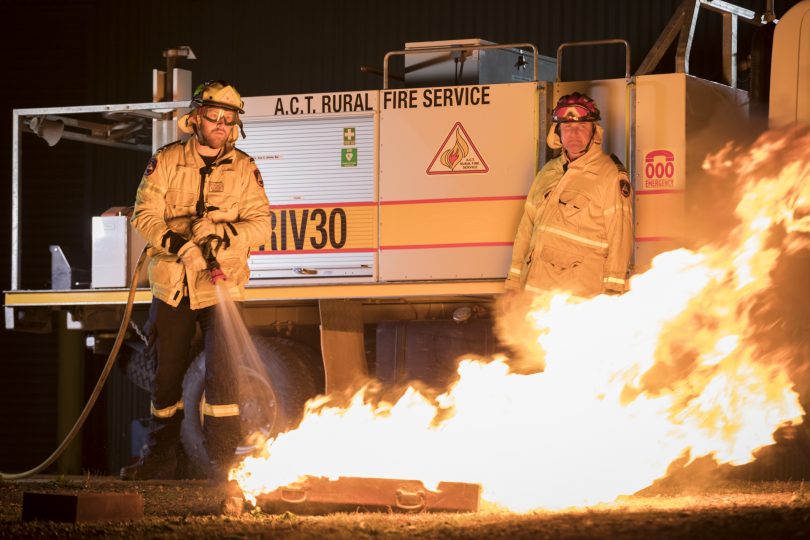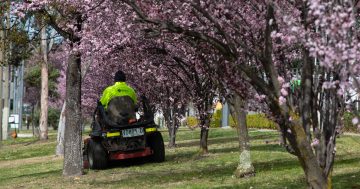
The ACT Rural Fire Service currently has 350 active volunteers across eight brigades. Photo: Michelle Kroll.
The 2024 bushfire season starts next month and is expected to be hotter than average, with an increased risk of heatwaves and storms.
ACT emergency services personnel addressed the media for a pre-season briefing this week, as the bushfire season begins on 1 October.
“The conditions are favourable for the development of a La Niña,” ACT Rural Fire Service (RFS) fire and weather analyst Paul Mahoney said. La Niña is characterised by above-average rains.
He also said the Territory was likely to very likely to see above-average daytime temperatures, with both days and nights expected to be unusually warm over spring and summer.
Mr Mahoney said there was a somewhat elevated risk of heatwaves and that the heat and above-average moisture meant there was an increased risk of storms throughout the season.
“We are already seeing heightened pollen counts in the atmosphere,” he said.
ACT RFS chief officer Rohan Scott said his key message was that it would be an average fire season compared to recent years, which had been below average.
He said the most significant risk to the ACT this season was “fast-moving grass fires” from January to February 2025, as the warm weather and coming rains would bring spring growth.
But he said the Territory’s heavy fuels were currently not posing a risk as they had good moisture content.
There are 350 active volunteers in the ACT RFS over eight brigades, while a ninth brigade is formed by ACT Parks and Conservation.
Mr Scott urged residents to be prepared for the season by cleaning their gutters, rooves and drain pipes, making sure they have a bushfire survival plan and an emergency kit at home, and downloading the Hazards Near Me app.
The assistant director for Alerts & Warnings, Leighton Bush, said there would be changes to the Australian Warning System (AWS) from 1 October.
The AWS is a national approach to warnings during emergencies like bushfires, floods, storms, extreme heat and severe weather. It uses three warning levels: Advice (yellow), Watch and Act (orange) and Emergency (red).
It is used on information maps like Hazards Near Me, which covers the ACT and NSW.
Mr Bush said heatwave and flood hazards will be introduced to the AWS this year, as well as location-based warnings. These two new hazards will use the same three warning levels.
He said the system uses thresholds from the Bureau of Meteorology to assess heatwaves and will be able to provide an emergency warning for such an event 24 hours in advance.
Mr Bush also said there will be a change for bushfire warnings, as the AWS will only use emergency markers from this year.
The start of the bushfire season on 1 October means landowners wanting to conduct burn-offs will need to obtain a permit.
You can view the ACT Emergency Services Agency incident map at ESA.





















